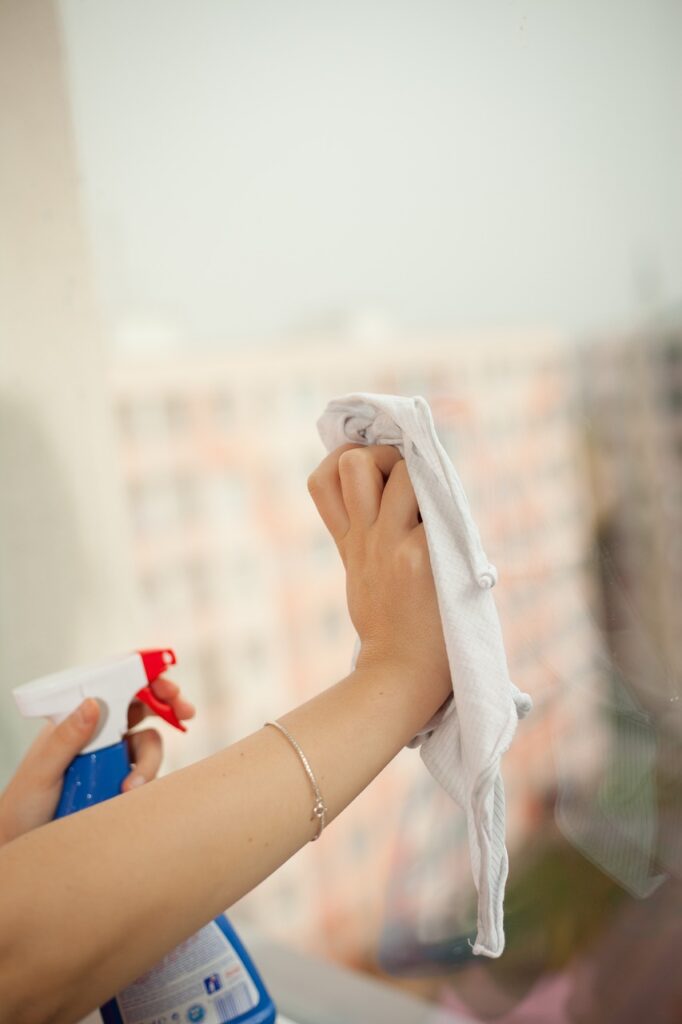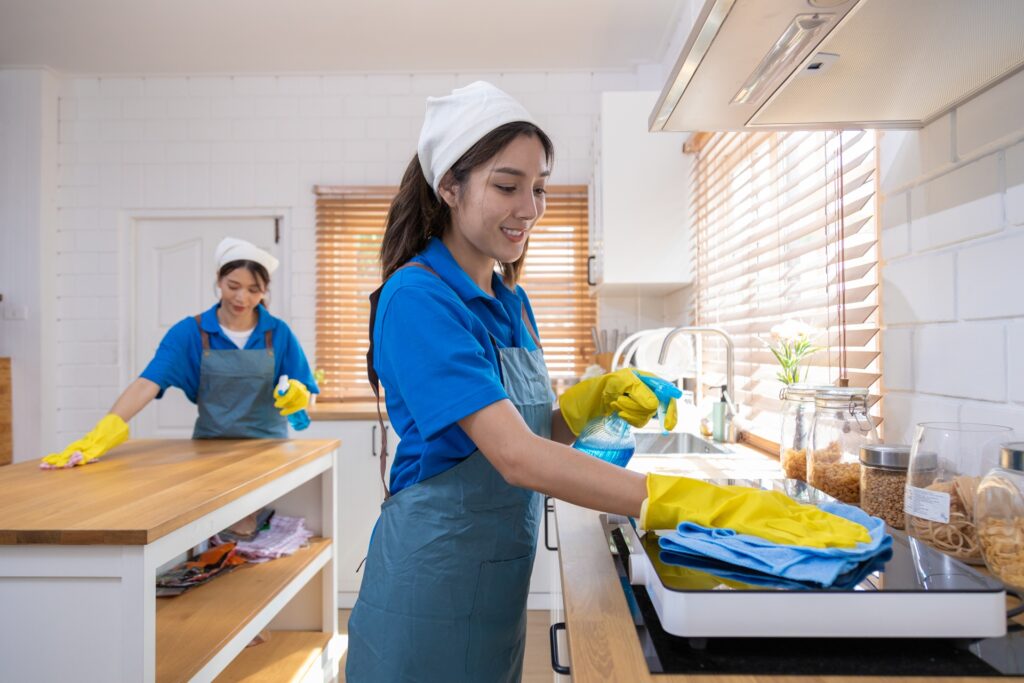For many of us, home cleaning is a necessary task that keeps our living spaces comfortable and sanitary. However, without the right approach, it can lead to back pain, muscle strain, and other physical concerns. We prioritize your health and comfort as much as the cleanliness of your home. That’s why it’s important to incorporate ergonomics into your cleaning routine. Ergonomics is the study of people’s efficiency in their working environment, and by applying ergonomic principles to house cleaning, we can help you clean more effectively while protecting your body from injury.
Integrating ergonomic methods doesn’t just protect your back; it also makes cleaning less of a chore by reducing physical strain. Whether you’re sweeping the floors, cleaning the windows, or scrubbing the bathroom, each task can be optimized for safety and comfort. By acknowledging the physical demands of these chores, we can adopt tools and techniques that prevent pain and enhance cleaning efficiency. This approach ensures that keeping your home clean doesn’t have to be a pain—literally. Let’s explore how simple adjustments to your cleaning habits can make a significant difference in protecting your well-being while you keep your home spotless.
Understanding Ergonomics in Home Cleaning
Ergonomics in home cleaning focuses on designing cleaning tasks in ways that minimize physical strain and enhance overall efficiency. When we talk about ergonomics in cleaning, we focus on the right techniques, tools, and methods that support the body’s natural movements, reducing the risk of injury and increasing cleaning productivity. It’s about aligning the task at hand with the physical capabilities of the person performing it. For instance, considering the height and posture when vacuuming or mopping floors is vital to prevent bending and twisting movements that could strain the back and shoulders.
Creating a cleaning environment that adheres to ergonomic principles involves assessing the physical demands of each task and adjusting them according to ergonomic guidelines. We consider aspects like the weight of cleaning tools, the force needed for scrubbing, and the elimination of repetitive tasks which can all contribute to musculoskeletal strain. By understanding and implementing these ergonomic basics, we not only protect our bodies but also make the cleaning process more enjoyable and less tiring.
Essential Ergonomic Cleaning Tools to Avoid Strain
To effectively reduce the risk of strain while cleaning, using ergonomically designed tools is key. These tools are specifically crafted to enhance comfort and efficiency, safeguarding against common cleaning injuries. Ergonomic mops and vacuum cleaners, for example, often feature adjustable handles which can be tailored to the user’s height, allowing for a more natural and upright posture. This adjustment is crucial in preventing the unnecessary bending that leads to lower back pain.
Similarly, ergonomically shaped scrub brushes with curved handles fit naturally in the hand, distributing pressure evenly and reducing the force required for scrubbing. Such innovations not only aid in reducing the risk of hand and wrist strain but also enhance the effectiveness of the cleaning effort. Furthermore, lightweight materials and easy-to-grip handles are essential characteristics of ergonomic cleaning tools, making them easier to maneuver without putting excess strain on muscles and joints. By incorporating these tools into regular cleaning routines, we ensure that maintaining a pristine home does not come at the expense of our health.
Techniques to Protect Your Back During Household Chores
Ensuring your back remains protected while performing household chores revolves around adopting specific techniques that support proper body mechanics. One vital technique we advocate for is the “power stance,” which involves keeping your feet one shoulder-width apart while cleaning. This stance ensures stability and balance, distributing your weight evenly and reducing strain on any single part of your body. Additionally, when you need to reach lower areas, always prefer bending your knees rather than curving your back. This squat-like position protects your spine, using your legs — stronger muscles — to absorb most of the strain.
Another key technique is to avoid twisting motions when sweeping or vacuuming. Instead of twisting your torso, we encourage turning your whole body in the direction you wish to clean. This method prevents undue torsion on your spine, reducing the risk of injury. Also, let’s not forget about taking breaks. We often underestimate the importance of periodically resting our bodies during cleaning tasks. Every 20 minutes, pause for a brief stretch or a short walk to relax your muscles. This simple habit can significantly reduce the risk of strain or injury.
Designing an Ergonomic Cleaning Schedule for Daily Use
Creating an ergonomic cleaning schedule that you can utilize daily involves organizing tasks in a way that they evenly distribute physical exertion throughout the week. We recommend starting by categorizing tasks by their physical demand — light, medium, and heavy. Allocate these tasks across different days to ensure you’re not overexerting on any single day. For instance, you might schedule light dusting and straightening up for Monday, vacuuming on Wednesday, and cleaning bathrooms — which may involve more strenuous scrubbing — on a Friday.
Further, integrate the earlier described ergonomic techniques into each cleaning activity. For example, when planning to mop floors, ensure the mop’s handle is adjusted to your height, allowing you to maintain that erect posture. Also, remember the importance of using suitable ergonomic tools for each task, as they are designed to work with your body rather than against it. By thoughtfully scheduling and preparing for these tasks, we make routine cleaning less of a chore and more of a series of well-planned activities that maintain both our homes’ cleanliness and our physical health.
Conclusion
Embracing ergonomics in your home cleaning routine is not just about using the right tools, but also about adjusting your methods and schedules to promote physical welfare. At SPECK Cleaning, we invest in training our team on these ergonomic practices and equip them with the best tools because we believe that understanding and implementing ergonomic principles is essential to protecting your health while ensuring your home shines.
Ready to experience the difference? Reach out to SPECK Cleaning today for professional cleaning services that guarantee not just a spotless home but also a healthier you!




